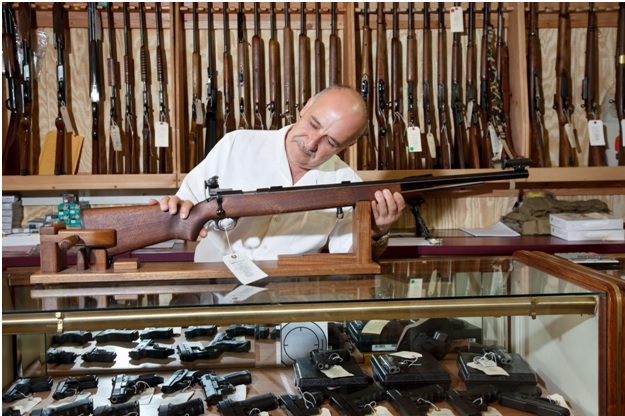What to Inspect on Surplus Firearms: a Quick Guide
Mar 29th 2023
Hunting for milsurp, specifically surplus firearms, can expose you to a treasure trove of possibilities and rare finds, sometimes at amazingly low prices.
Moreover, looking for surplus firearms is the only way to reasonably find certain military and official issue models.
We’ve posted about this extensively in previous blogs, such as “A Few Great Surplus Handguns for Sale,” “4 Excellent Military Surplus Rifles,” “4 More Excellent Military Surplus Guns,” and “4 More Great Military Surplus Guns for Sale.”
But let’s say you’ve never bought a surplus firearm before, or even a used gun, at all. What do you need to look for?
New guns are often covered by manufacturer warranties. While you should still work the action and test the trigger before buying, some of the bet is hedged by manufacturer guarantees.
It’s not like that with used or surplus guns.
So what should you check? Here’s a short list.
1.Exterior condition, hardware
The exterior condition of any used or surplus firearm is the first thing you should check.
Make sure the barrel is free of rust, pitting, and bulging, though minor cosmetic blemishes might be acceptable.
Inspect the stock for dry rot and cracking. Make sure hardware such as butt plates and sling mounts are present.
Check all fittings, keys, and fasteners to ensure they are present and properly installed.
Also, check the sights. Ensure they are not missing and check for signs of damage, as sometimes hooded and blade-style sights can be easily bent.
2.Action: Does it cycle?
For repeaters and autoloaders, ask permission to cycle the action. Bolt action, lever action, and pump action repeaters should open, cycle, and lock easily and fluidly.
For semi-automatic firearms, ensure that the action cycles and that all controls lock properly. Check to see that the slide or bolt locks to the rear properly and that it disengages crisply, locking and resetting when released.
Where applicable, inspect the bolt face, extractors, and ejectors for signs of corrosion or other damage.
3. Other controls: fire selector/safety, slide lock, bolt lock, special revolver considerations
Inspect and test other controls, such as half-cock settings for muzzleloaders and lever actions, and fire selector and safety controls for firearms that have them.
If the firearm is a revolver, inspect the cylinder latch. It should be in good condition and not loose or rattling. Inspect the forcing cone as well; it should be clean, though a small amount of erosion on a used revolver is normal.
If the revolver offers single-action functionality, make sure it sets securely and the hammer doesn’t release if pressure is applied to it.
4.Ask to test the trigger
Most reasonable shooters wouldn’t even buy a new gun without first testing the trigger, but first, ask the person showing you the firearm. Never dry fire a firearm without first asking permission.
They may allow you to dry fire some models on an empty chamber; some may first want to load a snap cap or a dummy round.
Make sure the trigger breaks cleanly and is not mushy, sticky, or gritty.
5. Ask to inspect the bore
You should also ask permission to inspect the bore. Most gun shop owners will happily offer you a bore light and let you inspect for signs of damage.
Where possible, such as with break action and bolt action firearms, remove the bolt or break the gun and look straight down the bore from the breech end.
It should look like a mirror, with no signs of residue, fouling, or rust in the interior.
6.Remove and insert the magazine to ensure the catch and release are working
A mag that isn’t working isn’t a huge deal as most can be replaced for anywhere between $10 and $30. But, if the mag catch or release isn’t working, that’s a bigger issue.
If the gun accepts a detachable box mag, drop the mag. Inspect the feed lips, follower, and mag body. They should be clean, in good shape, and free of corrosion or deformations.
Reinsert the mag and make sure it catches securely, with no play.
7. For rifled firearms: muzzle crown
For any rifled firearm - revolver, pistol, or rifle - inspect the muzzle crowning. The muzzle crowning is perhaps the most important aspect that ensures accuracy.
It should be clean and free of chips, nicks, and corrosion.
8. For shotguns: choke tubes
One more thing to consider, if you’re looking at a used shotgun with interchangeable chokes, is the choke tube.
Poorly maintained shotguns may have choke tubes that are frozen to the threads. Ask to loosen the choke tube if applicable to the model and ensure that it comes free and resecures smoothly.

Come See Our Collection of Surplus Firearms
At SARCO, Inc., we are proud of our exhaustive inventory that includes a huge selection of new firearms as well as used and surplus firearms, as well as hard-to-find parts for M1 Garand, M1 Carbine, Lee-Enfield, Carcano, Mauser, Mosin-Nagant, and other historically significant rifles.
Come on down to our showroom at 50 Hilton Street in Easton, Pennsylvania to get the full experience, or call ahead at 610-250-3960 to see what we have in stock before your visit.

